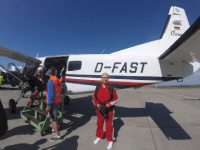Why complexity rules

Complexity dominates our world. This is the core of our brand message. Why did we choose this and what does it say about Movendo and our work?
We have to accept that there is not ONE correct perception of a situation.
Rather, there are very decisive, different solutions for confronting and dealing with complexity.
One important insight is that we can never grasp complexity on our own. Each person only ever sees part of the complexity. We therefore need many perspectives, many people, to get a good picture of complexity. We call this “multi-brain thinking”. And we have to accept that there are these many perspectives, i.e. not one correct perception of the situation. Another important insight is that we need new methods to deal with complexity. Long-term planning with milestones, fixed goals, firmly defined roles and responsibilities makes no sense if you don’t know how the complexity and therefore the task will develop in the next step. It is more helpful to have a process that constantly puts complexity on the agenda, raises the task to the meta-level or into the helicopter perspective, so that changes in complexity are a constant topic and can therefore be consciously dealt with. And this also means that continuous learning from experience, reflection and dealing constructively with mistakes are essential. There is no right way. In contrast to clear rules, principles of work and decision-making must be defined in complex environments as guard rails between which there is room for maneuver. In this way, people and organizations remain flexible and can respond to the reality of complexity.
At Movendo, we see ourselves as experts in strengthening people and organizations in dealing with complexity, developing the described principles together and implementing the new approach. We make people and organizations agile.





